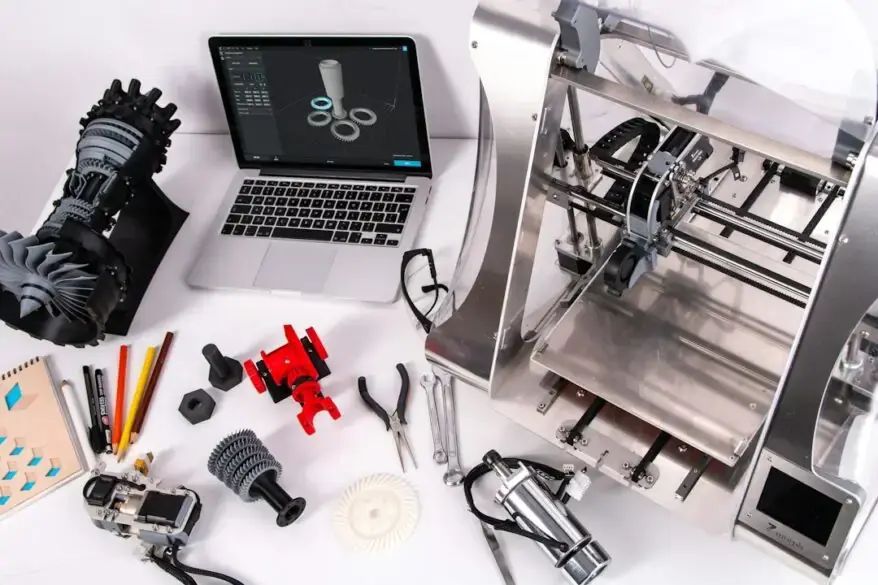Beyond the Classroom: How STEM Education is Shaping the Next Generation’s Career Paths
In today’s rapidly evolving world, STEM education has become increasingly important. STEM stands for Science, Technology, Engineering, and Mathematics, and it encompasses a wide range of disciplines that are crucial for innovation and problem-solving. STEM education is not just about teaching these subjects in isolation; it is about integrating them and providing students with the skills they need to succeed in the future.
The need for STEM education arises from the fact that we live in a technology-driven society. From smartphones to self-driving cars, technology is transforming every aspect of our lives. To keep up with these advancements and contribute to the development of new technologies, students need to develop skills that will prepare them for the future.
Key Takeaways
- STEM education is crucial for preparing students for the future of work.
- Critical thinking skills are essential for developing analytical and logical abilities.
- Problem solving skills are necessary for navigating complex challenges.
- Collaborative projects foster teamwork and communication.
- Artificial intelligence is a growing field that students should be prepared for through STEM education.
Critical Thinking Skills: Developing Analytical and Logical Abilities
One of the key benefits of STEM education is that it helps students develop critical thinking skills. Critical thinking involves analyzing information, evaluating evidence, and making logical connections. These skills are essential in fields such as engineering, computer science, and medicine.
For example, in engineering, critical thinking is necessary to design and build complex structures or systems. Engineers need to analyze data, identify patterns, and make informed decisions based on evidence. Similarly, in computer science, critical thinking is crucial for problem-solving and algorithm development. Programmers need to think logically and break down complex problems into smaller, more manageable parts.
Problem Solving Skills: Navigating Complex Challenges
STEM education also helps students develop problem-solving skills. In today’s world, we face numerous complex challenges, from climate change to healthcare issues. These challenges require innovative solutions that can only be developed through problem-solving.
STEM education provides students with the tools they need to navigate these challenges. By engaging in hands-on activities and real-world projects, students learn how to identify problems, gather information, brainstorm ideas, and test solutions. They learn how to think creatively and adapt their approaches when faced with obstacles.
For example, in the field of medicine, doctors and researchers need to solve complex health problems. They need to analyze symptoms, conduct tests, and develop treatment plans. Without strong problem-solving skills, it would be difficult to address these challenges effectively.
Collaborative Projects: Fostering Teamwork and Communication
STEM education also emphasizes collaboration and teamwork. In today’s interconnected world, most problems require a multidisciplinary approach. By working in teams, students learn how to communicate effectively, share ideas, and leverage each other’s strengths.
Collaborative projects in STEM education often involve designing and building prototypes, conducting experiments, or developing software applications. These projects require students to work together, delegate tasks, and coordinate their efforts. Through this process, they learn how to listen to others, give and receive feedback, and resolve conflicts.
Communication skills are also essential in STEM fields. Scientists need to present their research findings to colleagues and policymakers. Engineers need to explain their designs to clients and stakeholders. Effective communication ensures that ideas are understood and implemented correctly.
Artificial Intelligence: Preparing for the Future of Work
The future of work is being shaped by artificial intelligence (AI) and automation. As technology continues to advance, many routine tasks will be automated, leading to a shift in the job market. However, AI also presents new opportunities for innovation and creativity.
STEM education plays a crucial role in preparing students for the future of work. By learning about AI and its applications, students can develop the skills needed to work alongside intelligent machines. They can learn how to leverage AI tools and algorithms to solve complex problems and make informed decisions.
Moreover, STEM education helps students develop a growth mindset, which is essential in a rapidly changing world. A growth mindset is the belief that abilities can be developed through dedication and hard work. This mindset allows individuals to embrace challenges, persist in the face of setbacks, and continuously learn and improve.
Career Readiness: Equipping Students with Essential Skills

STEM education equips students with essential skills that are transferable to various fields. These skills include critical thinking, problem-solving, collaboration, and communication. Regardless of the specific career path students choose, these skills will be valuable.
For example, in business and entrepreneurship, critical thinking is necessary for analyzing market trends and making strategic decisions. Problem-solving skills are essential for identifying opportunities and developing innovative solutions. Collaboration and communication skills are crucial for building teams and engaging with customers.
Similarly, in the arts and humanities, STEM skills can enhance creativity and innovation. For example, artists can use technology to create interactive installations or virtual reality experiences. Historians can use data analysis techniques to uncover patterns and insights in historical records.
STEM Education and the Job Market: Opportunities and Trends
The job market is increasingly favoring candidates with STEM education. According to the U.S. Bureau of Labor Statistics, STEM occupations are projected to grow by 8.8% from 2019 to 2029, compared to 3.7% for non-STEM occupations. This growth is driven by advancements in technology and the increasing demand for skilled workers.
STEM fields offer a wide range of career opportunities, from software development to biomedical engineering. These fields also tend to offer higher salaries compared to non-STEM fields. According to the National Association of Colleges and Employers, the average starting salary for STEM graduates in 2020 was $66,123, compared to $53,889 for non-STEM graduates.
The Role of Teachers and Educators in STEM Education
Teachers and educators play a crucial role in promoting STEM education. They have the power to inspire students and ignite their passion for science, technology, engineering, and mathematics. By creating engaging learning experiences and providing hands-on opportunities, teachers can help students develop a love for STEM subjects.
Teachers can also encourage students to pursue STEM fields by showcasing the real-world applications of these subjects. They can invite guest speakers from STEM professions, organize field trips to STEM-related companies or research institutions, and facilitate mentorship programs.
Moreover, teachers can create inclusive and supportive learning environments that encourage all students to participate in STEM education. They can address gender and racial disparities in STEM fields by promoting diversity and equity. By providing equal access to resources and opportunities, teachers can ensure that all students have the chance to succeed in STEM.
Overcoming Barriers to STEM Education: Addressing Equity and Access
Despite the importance of STEM education, there are still barriers that prevent many students from accessing quality STEM programs. These barriers include lack of resources, limited access to technology, and gender and racial disparities.
To address these barriers, it is crucial to provide equal access to STEM education for all students. This can be done by investing in schools and communities that lack resources, providing scholarships and financial aid for underprivileged students, and promoting diversity and inclusion in STEM fields.
Additionally, it is important to challenge stereotypes and biases that discourage certain groups from pursuing STEM education. By promoting positive role models and showcasing the achievements of women in STEM fields, we can inspire more students to pursue these careers.
The Future of STEM Education and Its Impact on the Next Generation’s Career Paths
In conclusion, STEM education is crucial for preparing students for the future. It helps them develop critical thinking skills, problem-solving abilities, collaboration and communication skills, and prepares them for the impact of artificial intelligence on the job market.
STEM education equips students with essential skills that are transferable to various fields, ensuring their career readiness. The job market trends show a growing demand for STEM professionals, offering numerous opportunities for those with a STEM education.
Teachers and educators play a vital role in promoting STEM education by inspiring students, creating inclusive learning environments, and addressing barriers to access. By overcoming these barriers and providing equal opportunities for all students, we can ensure that the next generation is well-prepared for the challenges and opportunities of the future.
If you’re interested in exploring how STEM education is shaping the career paths of the next generation, you might want to check out the article “Career in STEM Education” on EnTech Online. This insightful piece delves into the various opportunities and benefits that STEM education offers, highlighting the importance of preparing students for the jobs of the future. From computer science to artificial intelligence, this article explores the wide range of fields that STEM education encompasses. Discover how STEM education is equipping students with the skills and knowledge they need to thrive in a rapidly evolving world. Read more
FAQs
What is STEM education?
STEM education is an approach to learning and development that integrates the areas of science, technology, engineering, and mathematics. It is designed to prepare students for careers in these fields and to develop critical thinking, problem-solving, and analytical skills.
Why is STEM education important?
STEM education is important because it prepares students for the jobs of the future. Many of the fastest-growing and highest-paying jobs are in STEM fields, and there is a growing demand for workers with STEM skills. Additionally, STEM education helps students develop critical thinking, problem-solving, and analytical skills that are valuable in any career.
How is STEM education different from traditional education?
STEM education is different from traditional education in that it focuses on integrating the areas of science, technology, engineering, and mathematics. It is designed to be hands-on and project-based, with an emphasis on real-world applications and problem-solving. Traditional education, on the other hand, is often more lecture-based and focused on memorization and testing.
What are some examples of STEM careers?
Some examples of STEM careers include software developer, data analyst, engineer, scientist, mathematician, and medical researcher. There are many other careers that require STEM skills, and the demand for workers in these fields is expected to continue to grow in the coming years.
How can students get involved in STEM education?
Students can get involved in STEM education by taking STEM classes in school, participating in STEM clubs and competitions, attending STEM camps and workshops, and pursuing STEM-related extracurricular activities. There are also many online resources available for students who are interested in STEM education.






